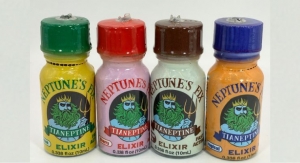10.28.22
A complex of palm carotenes branded as EVTene by ExcelVite exerted protective effects against oxidative-stress induced age-related macular degeneration, according to a study on human cells in vitro.
Age-related macular degeneration (AMD) is a condition in the eyes in which oxidative stress causes damage to the macula, resulting in a blurred center of vision, and it is estimated that 200,000 people are diagnosed with AMD each year.
Based on the results of in vitro analysis, researchers concluded that palm carotene complex, which contains beta-carotene, alpha-carotene, and lycopene, can exert similar protective effects in the eye as lutein and zeaxanthin.
At the beginning of the study, the cell proliferation and cytotoxicity effects of carotenes on normal and cancerous human cells were evaluated to ensure the safety of carotenes in the targeted cells. The potential of palm carotene in protecting against oxidative stress was also identified by using real-time polymerase chain reaction (PCR).
The palm carotene treatment was found to have no influence on the proliferation of cancer cells, and was also found to be non-toxic to human retinal epithelial cells.
Cells were treated with hydrogen peroxide to mimic oxidative stress, in order to understand what if any protective effect the carotenes might have. The treated cells were protected and viable after hydrogen peroxide-induced damage, and it was found in the gene analysis that several inflammatory genes were downregulated as a result of the palm carotene treatment.
This suggested to the authors a potential protective effect against oxidative stress induced AMD, and that the carotenes potentially worked through immune system pathways. Specifically, liver-X-receptor (LXR), a pathway related to AMD, activated LXR, giving a hint that this receptor could be involved in the protective mechanism of action.
“This present study warrants further and more advanced research,” the authors of the study concluded. “With all the positive in vitro findings, continued research to validate the effects of palm carotene on AMD will be of vital importance since the current findings can’t be extrapolated to the real situation in AMD patients.”
Age-related macular degeneration (AMD) is a condition in the eyes in which oxidative stress causes damage to the macula, resulting in a blurred center of vision, and it is estimated that 200,000 people are diagnosed with AMD each year.
Based on the results of in vitro analysis, researchers concluded that palm carotene complex, which contains beta-carotene, alpha-carotene, and lycopene, can exert similar protective effects in the eye as lutein and zeaxanthin.
At the beginning of the study, the cell proliferation and cytotoxicity effects of carotenes on normal and cancerous human cells were evaluated to ensure the safety of carotenes in the targeted cells. The potential of palm carotene in protecting against oxidative stress was also identified by using real-time polymerase chain reaction (PCR).
The palm carotene treatment was found to have no influence on the proliferation of cancer cells, and was also found to be non-toxic to human retinal epithelial cells.
Cells were treated with hydrogen peroxide to mimic oxidative stress, in order to understand what if any protective effect the carotenes might have. The treated cells were protected and viable after hydrogen peroxide-induced damage, and it was found in the gene analysis that several inflammatory genes were downregulated as a result of the palm carotene treatment.
This suggested to the authors a potential protective effect against oxidative stress induced AMD, and that the carotenes potentially worked through immune system pathways. Specifically, liver-X-receptor (LXR), a pathway related to AMD, activated LXR, giving a hint that this receptor could be involved in the protective mechanism of action.
“This present study warrants further and more advanced research,” the authors of the study concluded. “With all the positive in vitro findings, continued research to validate the effects of palm carotene on AMD will be of vital importance since the current findings can’t be extrapolated to the real situation in AMD patients.”




























